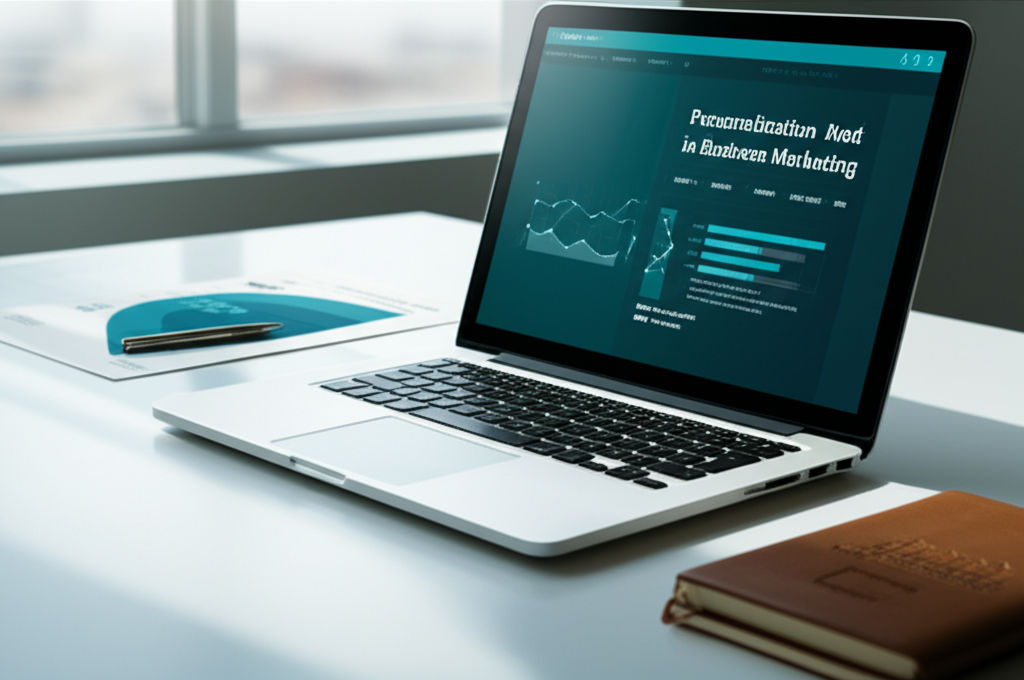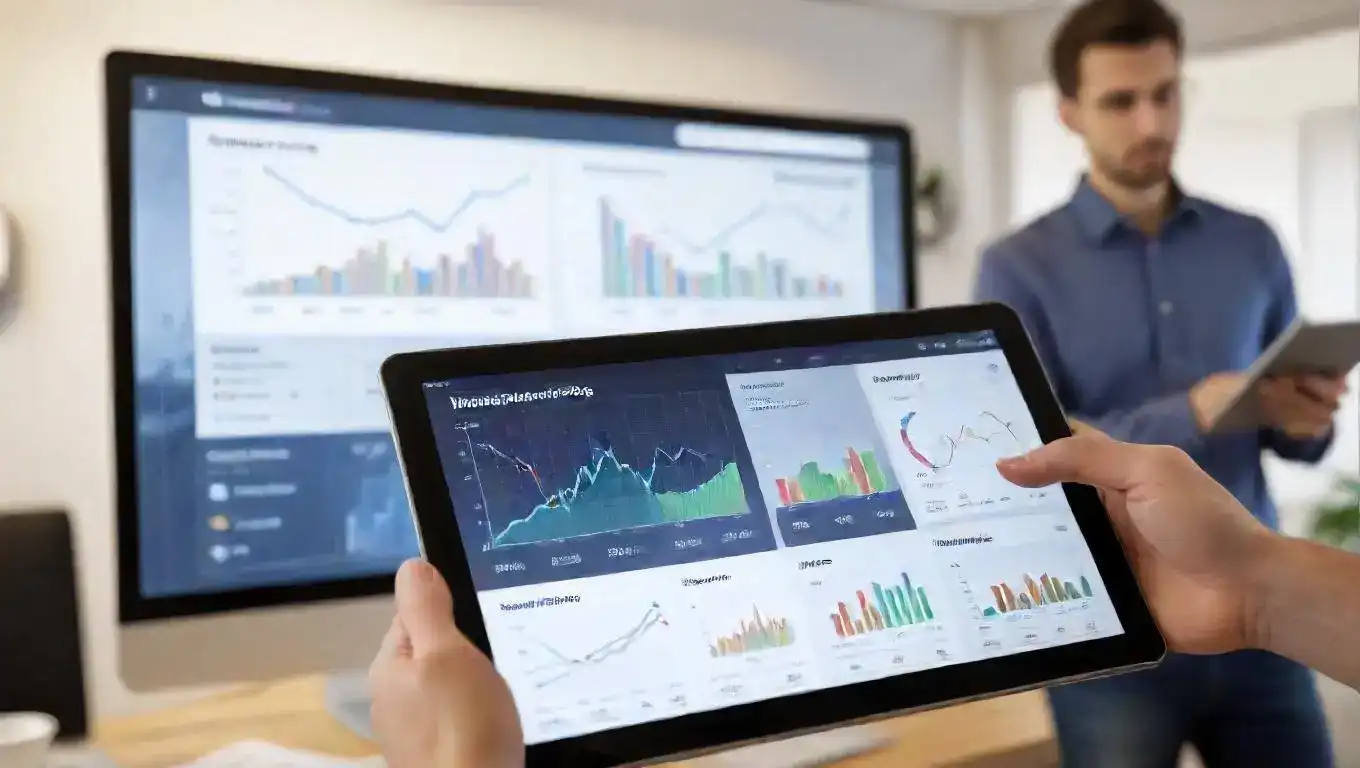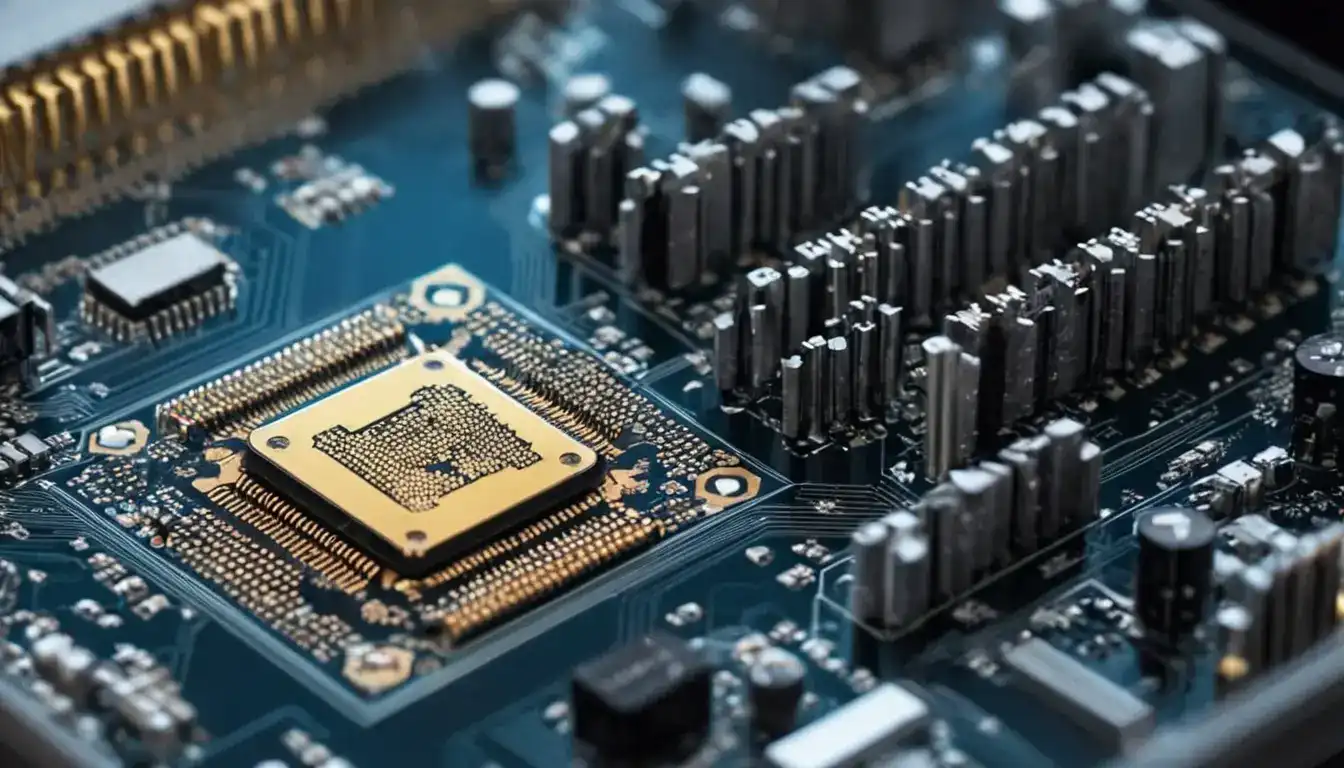Beginner's Guide to Affiliate Marketing
Emily Willis

Photo: Beginner's Guide to Affiliate Marketing
The Beginner's Guide to Affiliate Marketing: Unlock Your Path to Online Income
In an increasingly digital world, the pursuit of flexible income streams and entrepreneurial ventures has led many to explore the vast opportunities available online. Among these, affiliate marketing stands out as a popular and accessible avenue for individuals looking to earn money without the complexities of creating their own products or managing inventory. This comprehensive guide will demystify affiliate marketing, providing a clear roadmap for beginners to embark on their journey toward generating online income.
What Exactly is Affiliate Marketing?
At its core, affiliate marketing is a performance-based marketing strategy where a business compensates third-party publishers (affiliates) to drive traffic or leads to the company's products and services. Think of it as earning a commission for recommending products or services you genuinely believe in. If someone clicks your unique affiliate link and makes a purchase, you, as the affiliate, receive a percentage of that sale.
This model is a win-win: businesses expand their reach and sales without upfront advertising costs, while affiliates earn revenue by leveraging their influence and audience.
The Core Concept: How It Works
The process of affiliate marketing is relatively straightforward:
- You promote a product or service: This could be through a blog, social media, YouTube videos, email newsletters, or other online channels.
- Someone clicks your unique link: When you join an affiliate program, you receive a special tracking link that identifies you as the referrer.
- They make a purchase: If the person who clicked your link buys the product or service, the transaction is recorded.
- You earn a commission: The company or affiliate network confirms the sale, and you receive a pre-defined commission, which can range from a small percentage to a fixed amount, depending on the product and program.
Key Players in the Affiliate Ecosystem
Understanding the different roles involved helps clarify the process:
- The Merchant (or Seller/Product Creator): This is the company or individual that creates the product or service being marketed. They could be a large corporation (like Amazon) or a solo entrepreneur.
- The Affiliate (or Publisher/Advertiser): This is you, the individual or company promoting the product. Affiliates often have a specific audience or "niche" they cater to, which helps them attract consumers most likely to be interested in the promoted products.
- The Consumer: This is the customer who ultimately buys the product or service. Without them, there are no commissions.
- The Affiliate Network (Optional but Common): These platforms act as intermediaries between merchants and affiliates, managing tracking, payments, and providing a directory of various affiliate programs. Examples include Amazon Associates, CJ Affiliate, ClickBank, ShareASale, and Awin.
Why Consider Affiliate Marketing as a Beginner?
For those new to online entrepreneurship, affiliate marketing offers several compelling advantages:
- Low Barrier to Entry: You don't need to create your own product, handle customer service, or manage inventory. This significantly reduces the initial investment and risk. Many platforms allow you to start with minimal or no upfront costs.
- Passive Income Potential: Once your content is created and optimized, it can continue to generate income over time, even while you're not actively working. This is a key appeal for those seeking passive income streams.
- Flexibility and Freedom: You can work from anywhere with an internet connection, set your own hours, and promote products that align with your interests and values.
- No Product Creation Required: This eliminates the complex and often costly process of product development, manufacturing, and distribution, allowing you to focus purely on marketing and audience engagement.
- Diverse Product Selection: Through affiliate networks, you can find programs for virtually any niche, from tech gadgets to fitness products, allowing you to promote what you genuinely care about.
Step-by-Step: Your Beginner's Journey in Affiliate Marketing
Starting your affiliate marketing journey doesn't have to be overwhelming. Here's a structured approach:
Step 1: Choose Your Niche Wisely
Your niche is the specific segment of the market you'll focus on. Choosing the right niche is crucial for long-term success.
- Passion Meets Profitability: Select a topic you're genuinely interested in or knowledgeable about. This makes content creation enjoyable and helps you build authenticity and trust with your audience.
- Audience Demand: Research if there's an active audience looking for solutions or information within that niche. Tools for keyword research can help identify popular search terms and trends.
- Monetization Potential: Ensure there are enough quality products or services within your chosen niche that offer decent commission rates.
Step 2: Research and Join Reputable Affiliate Programs
Once you have a niche, it's time to find products to promote.
- Affiliate Networks: These platforms host numerous programs, making it easy to browse and apply. Popular choices for beginners include:
- Amazon Associates: Offers access to millions of products, making it a common starting point.
- CJ Affiliate (formerly Commission Junction): Connects you with a vast array of brands.
- ShareASale: Known for a wide range of products, including many smaller businesses.
- ClickBank: Popular for digital products like e-books and online courses, often with higher commission rates.
- Awin (formerly Affiliate Window): Another large network with diverse advertisers.
- Direct Programs: Many companies run their own affiliate programs directly from their website. If you love a particular brand, check their site for an "Affiliates" or "Partners" section.
- Evaluate Commission Structures: Look at how much you'll earn per sale (e.g., percentage, flat fee) and the cookie duration (how long your referral link tracks a purchase after the initial click).
Step 3: Create High-Quality Content
This is where you provide value to your audience and naturally integrate your affiliate links. Your content should aim to inform, entertain, or solve a problem.
- Choose Your Platform:
- Blogs/Websites: A classic choice for in-depth reviews, how-to guides, and comparisons. Many successful affiliate marketers leverage blogging to drive traffic.
- YouTube Channel: Ideal for video reviews, tutorials, and unboxings. Visual content can build strong trust.
- Social Media: Platforms like Instagram, TikTok, and Pinterest can be powerful for visual product promotion and engaging directly with your audience.
- Email Marketing: Building an email list allows for direct communication and promotion of relevant offers.
- Focus on Value, Not Just Selling: Your audience will trust you if you genuinely help them. Provide honest reviews, share personal experiences, and offer solutions. Avoid being overly pushy.
- Integrate Links Naturally: Don't just dump links. Weave them into your content where they make sense and genuinely assist the reader in finding the product you're discussing.
Step 4: Drive Targeted Traffic to Your Content
Even the best content needs an audience. Here are common strategies to attract visitors:
- Search Engine Optimization (SEO): Optimize your content with relevant keywords so it ranks higher in search engine results. This drives organic, free traffic.
- Social Media Marketing: Share your content across relevant social platforms to reach a wider audience and engage with potential customers.
- Email Marketing: Build an email list and send out newsletters with valuable content and curated affiliate offers.
- Paid Advertising (Use with Caution): While effective, platforms like Google Ads or Facebook Ads require a budget and careful management. Beginners might want to master organic methods first.
Step 5: Convert Traffic into Sales and Track Performance
Attracting visitors is only half the battle; converting them into customers is key.
- Clear Calls-to-Action (CTAs): Guide your audience on what to do next (e.g., "Learn More Here," "Shop Now").
- Analyze Your Data: Most affiliate networks provide dashboards to track clicks, conversions, and earnings. Regularly review this data to understand what's working and what's not. This allows you to optimize your strategies for better results.
- Optimize and Iterate: Based on your analytics, refine your content, try different promotional methods, and test various affiliate products to improve your conversion rates.
Step 6: Legality and Best Practices: The Affiliate Disclosure
Transparency is paramount in affiliate marketing.
- FTC Guidelines: In the United States, the Federal Trade Commission (FTC) requires affiliates to clearly disclose their relationship with brands when promoting products. This ensures consumers are not misled.
- Clear and Conspicuous Disclosure: Your disclosure should be easy to see and understand. Place it at the beginning of your content, near the affiliate link, or in a prominent location on the page. Phrases like "This post contains affiliate links, meaning I may earn a commission if you make a purchase through my links, at no extra cost to you" are effective.
- Truthful Claims: Ensure all claims made about products are accurate and substantiated. Avoid exaggerated
Latest ✨
View AllMaster the art of handling complaints effectively. Learn the psychology, actionable steps, and how to turn feedback into opportunities for growth and stronger r...
Emily Willis
Women's participation in sport has evolved into a powerful movement that challenges societal norms, empowers individuals, and promotes inclusivity. This article explores the journey of women in sport, highlighting their achievements, the obstacles they have overcome, and the transformative impact they continue to have in the world of sport and beyond.
Emily Willis
Beyond crypto hype: Understand digital asset economics. Learn core principles like supply, demand, scarcity & utility to navigate the market wisely.
Emily Willis
Redefining success in education means moving beyond grades. Learn how future outcomes focus on adaptability, critical thinking, and skills for an unpredictable...
Emily Willis
Business
View All
June 9, 2025
Risk Management: Protect Your BusinessUnlock business resilience! Master risk management to protect assets, enhance decision-making, minimize losses, and ensure sustainable growth in an uncertain wo...
Emily Willis

June 8, 2025
Entrepreneurial Journey to SuccessDemystify the entrepreneurial journey. This guide offers actionable strategies to transform ideas into thriving businesses, navigate challenges, and achieve las...
Emily Willis

June 8, 2025
Personalization in Business MarketingUnlock business growth! Learn how personalized marketing transforms interactions, boosts engagement & loyalty by speaking directly to your customers.
Emily Willis
Economy
View AllBuild your financial future! Demystify investing with smart, accessible strategies & practical tips for everyone to grow lasting wealth.
Read MoreInfrastructure development is crucial for driving economic growth and regional integration by improving connectivity, facilitating trade, and enhancing quality of life. Investments in transportation networks and digital infrastructure support businesses in accessing larger markets and capitalizing on trade opportunities. Well-developed infrastructure simplifies trade processes and attracts industries to specific regions, promoting economic development. Access to essential services and urban infrastructure improves quality of life and fosters sustainable urbanization. Green infrastructure projects support environmental conservation and contribute to sustainable development goals. Overall, strategic investments in infrastructure are essential for building resilient, inclusive, and prosperous communities in the global economy.
Read MoreUnlock historical wisdom and ancient philosophies for preventing depression. Learn timeless strategies for resilience and emotional balance in modern life.
Read MoreEntertainment
View All
August 5, 2024
Arts Education's Importance: Nurturing Creativity and Fostering ExpressionArts education is often overlooked in a world focused on standardized tests and STEM subjects, but it plays a vital role in nurturing creativity, self-expression, and essential skills in students. Arts education allows students to unleash creativity, build confidence, improve communication and collaboration skills, develop critical thinking and problem-solving abilities, increase cultural awareness and appreciation, and enhance emotional intelligence.
Emily Willis

August 5, 2024
Music Universal Language: Connecting and Inspiring Across CulturesMusic has the power to transcend language barriers and connect people on a deep emotional level. It serves as a bridge between cultures, fostering understanding and appreciation for diversity. The universality of rhythm and melody creates a sense of unity, while the diversity of musical styles allows for exploration and creativity.
Emily Willis

August 4, 2024
The Evolution of Digital Distribution in the Music Industry: Challenges and OpportunitiesThe music industry has been transformed by digital distribution, which allows quick access to a vast catalog of music through streaming services and online stores.
Emily Willis
Health
View AllRegular physical activity is crucial for maintaining long-term health and well-being. It has numerous benefits, including improving cardiovascular health, aiding in weight management, enhancing mental health, strengthening bones, boosting immune function, and promoting longevity.
Emily Willis
our minds are often overwhelmed with information and stimuli, leading to stress and anxiety. Mindfulness and meditation offer tools to cultivate inner peace and well-being. Mindfulness involves being present in the moment without judgment, while meditation involves focusing attention on an object or thought.
Emily Willis
Maintaining good health involves a balanced diet that provides essential nutrients for the body. A balanced diet includes carbohydrates, proteins, fats, vitamins, minerals, fiber, and water. Benefits of a balanced diet include enhanced energy levels, improved mental health, a stronger immune system, better weight management, reduced risk of chronic diseases, and enhanced digestion. Components of a balanced diet include fruits and vegetables, whole grains, protein sources, dairy or dairy alternatives, and healthy fats. Tips for maintaining a balanced diet include planning meals, portion control, staying hydrated, limiting processed foods, eating mindfully, and including physical activity.
Emily Willis
Trending 🔥
View All
1
3
4
5
7
8
9
10
Sports
View AllAugust 4, 2024
The Importance of Mental Training and Psychological Strategies in Helping Athletes Reach Their Peak Performance on the Field
Read MoreAugust 5, 2024
The Future of Sports: Anticipating Trends, Embracing Innovation, Shaping a New Era
Read MoreAugust 4, 2024
Sports Technology Innovation: Revolutionizing Training and Performance Analysis
Read MoreTechnology
View All
August 4, 2024
Exploring the Potential of Quantum Computing in Modern Technology
Quantum computing is a revolutionary technology that uses quantum bits, or qubits, to process information. It has the potential to solve complex problems, revolutionize cryptography, accelerate drug discovery, optimize complex systems, and enhance artificial intelligence.

August 5, 2024
Tips for Implementing Cloud Computing Safely and Efficiently
Cloud computing is essential for modern businesses, offering cost savings, scalability, and improved collaboration. Implementing cloud computing requires careful planning to ensure safety and efficiency. Tips for safe and efficient implementation include conducting a needs assessment, choosing the right cloud service model, prioritizing security, planning for data migration, optimizing costs, training your team, implementing backup and recovery solutions, monitoring performance, planning for scalability, and staying updated with industry trends.

August 5, 2024
Oculus Quest 2 vs HTC Vive Pro – Which Should You Choose?
Oculus Quest 2 vs HTC Vive Pro – which VR headset reigns supreme? Dive into this ultimate showdown to discover the strengths and weaknesses of each, and decide which one is worth your investment. From specs and comfort to content and price, we'll help you make an informed choice.

August 5, 2024
AI Applications that are Changing the World Around Us
Artificial Intelligence (AI) is no longer a concept from science fiction, but a reality that is reshaping the world around us. From virtual assistants to self-driving cars, AI is making significant impacts in various industries such as healthcare, education, transportation, and agriculture. AI is also being used to address environmental challenges and enhance customer experiences.





















